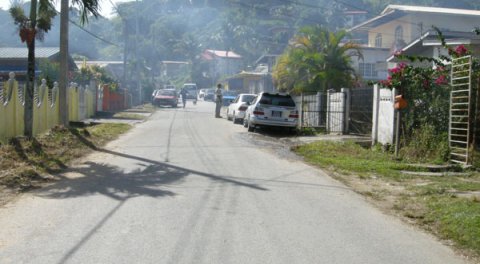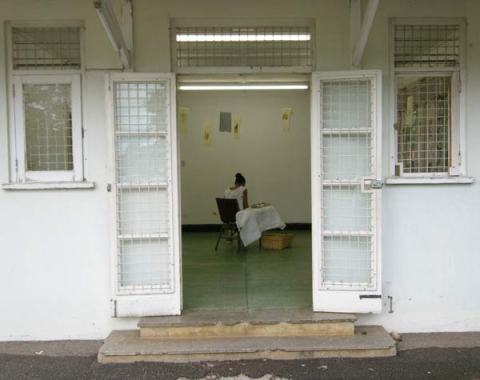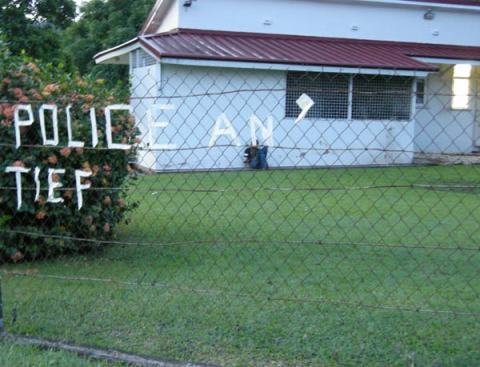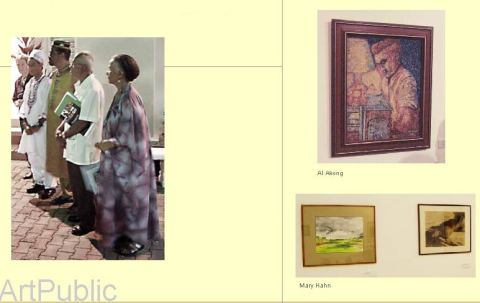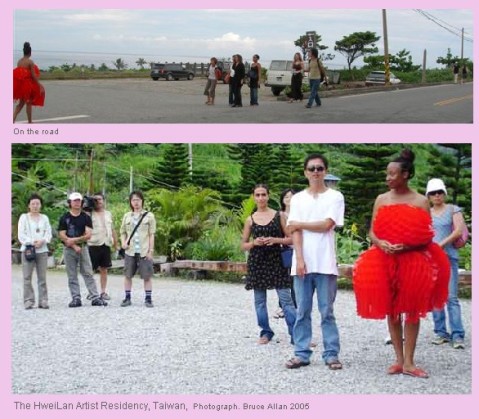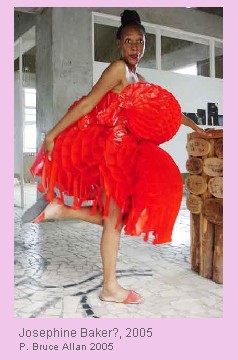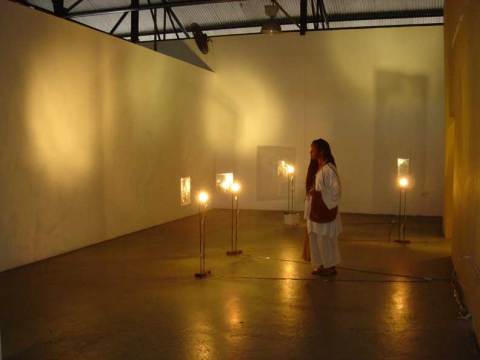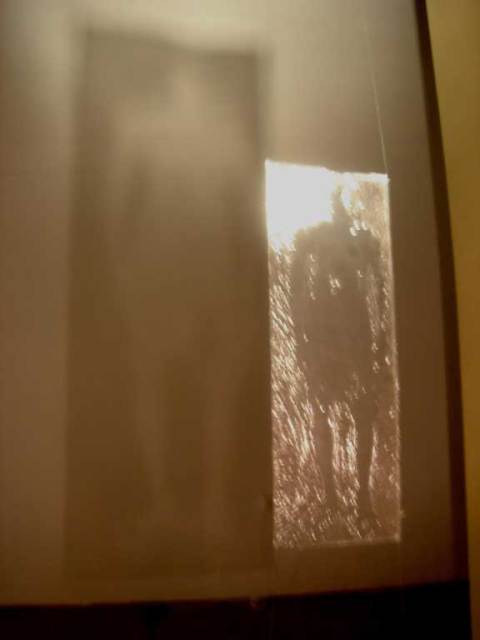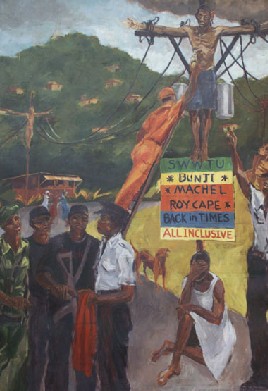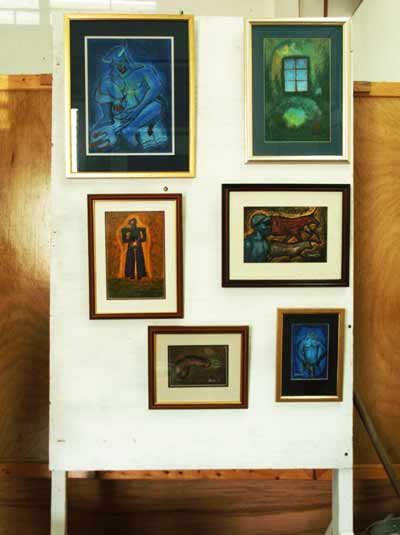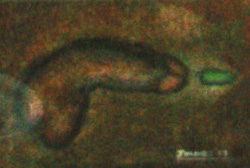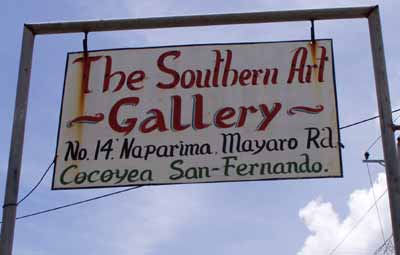Archive for the ‘Adele’ Category
Patna village celebrates Divali 2009
This year thebookmann went to Patna Village to take pictures of the Divali celebrations, only to be met by empty streets. He was so surprised to see nothing going on, and a passerby from the area told him that crime has kept people indoors. This reality made him pause, because Divali,the first of three holidays in the year of a religious nature, all believe in lighting the darkness, is now a casualty of society today.
He understands perfectly that people are wary, and feel no confidence in their government or law enforcement when they decide to forgo a wonderful, family and neighbour oriented occasion. But it could not be missed that this decision went against all that the festival is about. We light our deyas tonight with the affirmation that we shall stem the darkness, it will NOT PREVAIL, and we shall vanquish the terror in the end.
Shubh Divali
Other content of my favorite blog (spanish):
Cambiar contraseña wifi: 192.168 l 8.1
A Great Day in Trinidad and Tobago’s History – A.T.
Rain, nah, I still going, is fete remember…All inclusive
Today I ended a chapter in my work from many perspectives. Ended is a large body of embroidery on violence in Trinidad and Tobago. Certainly it is not the last of making these pieces that I have focused on for a decade. Yet, ended is the requirements taken to research this topic.
The space chosen for this departure was the University of the West Indies. A space called ‘The House’, on Warner Street. An old colonial bungalow, practically forgotten. Used for classes, but bereft of care.
The show continues to the 28th of August, 2009.
Titled Police an’ Tief, I look at crime in Trinidad and Tobago from four perspectives.
The police,
The criminal,
The judiciary and
The victims.
The colour choices for each grouping:
grey,
brown,
yellow
and
white.
Walking into “The House’ was a sight to behold, alot of work needed to be done to get it in shape. In some ways the house was a testament to the state of Trinidad today. On the one hand, the past stared me in the face in the guise of the old abstract patterned curtains, dusty with wear.
Many made promises, empty from the start. No one really wants to touch this topic. They will talk, and tell you how brave, how talented, how important. But they stay away from this issue.
Nonetheless,this is a tribute to all of those who stay, the photographers in our society who take the thankless, sad pictures of our fellow men felled in service, the crying victims, the arrogant perpetrators…
The POWER OF THREAD is the point of my works.
THREAD is the work.
REMEMBER 23.08.09
Remembering Geocities 2004 – Pioneers of an Era
Pioneers of an Era
This second in a series of group exhibitions put on at the National Museum in collaboration with the creative director of Studio 66, Mr. Makemba Kunle is an important milestone in the history of Art in Trinidad and Tobago. Six luminaries of an era are chosen and their works displayed. In July 2004 the artists chosen were Kenrick Callender, Edward Davidson, Holly Gayadeen, Marcelio Hovell, Ferdinand Romilly and Leo Warner. In July 2005 the six are Al Akong, Alexis Ballie, Barbara Felice, Cyprian Rivers, Mary Hahn and Paul ‘Bill” Trotman. The handsome catalogue that accompanies the show states that the works of the six artists ‘serve as the foundation for the countries artistic development.’ It is within this context that this review shall be taken.
The curator of the national museum, Mr.Vel Lewis has been very successful in creating a series of interesting shows over the years, and he has managed to produce a strong roster of shows that over time may become annual events. Mr. Lewis has his critics, but as curator he has a lot more to be pleased with, as there is so much that he has managed to do for the museum over his tenure.
This second in the series of shows on pioneers is one such plan and a very commendable one. The inclusion of colour catalogues on the subject brings the exhibition to a level of historical importance, providing possibly the only chance at seeing such works in print in such a setting.Looking at the works of artists who are living legends is an awe inspiring one. You find yourself filled with questions for all of them. How did they manage throughout the years. How do they feel about art today? To look at the works of these pioneers, one must keep what one sees within its context. It is clear that the works for many of the artists are things completed many years before. What is surprising is that the earliest piece shown is dated to 1956 and is the only work so dated. Most of the works are from the 1990’s.
Here is where the challenges of the exhibition begin. The choice of what to show and the relationship of one work to another and to a body of work as a whole may be in question. Before going to this second show, I happened to visit Horizon’s Art Gallery that same day, and I came across works by Larry Mosca and Leo Glasgow. I observed to a friend the subtle changes that I saw taking place in their development with these new pieces that were in the gallery space. It was quite exciting to see for example that Mr. Mosca is now looking at softening his backgrounds to a misty palette, to focus on greater detail in his observation of birds.
What I believe is missing in ‘Pioneers’ is that same steady observation. The show takes place during the vacation for many parents and their children to visit the museum and find out about these artists. For many people the names of the artists are vague to the memories. Paul ‘Bill’ Trotman would be the most well known because of his background in Calypso. Alexis Ballie is another luminary for those of us who follow art. But the other names are not as obvious. So there is an opportunity for this show to educate the public. It is not enough that on show are seven or eight works by each artist from the same decade when that person has been working for thirty to fourty years. It would have been better served to show the growth of each artist over time. For example the ceramic pieces of Barbara Felice. Some background history that accompanied the work would help put her work into its proper context. One may argue that that would require the assistance of art theorists, critics and the like, and that is true. Where are these people to assist in making this show historically relevant? But not only that, at the opening to this second installment on pioneers, I was disappointed that although there was a decent showing of guests, it was obvious that the ‘younger’ artists were missing. But that is another matter.
I commend the idea to have shows of this nature, but I am concerned that by not considering the larger context, works by artists such as these can be misinterpreted and misunderstood. One can be left with the impression that art is taken casually, that pastoral imagery is all that fifty to eighty years of art in Trinidad and Tobago has produced, and perhaps this is indeed the case.
I however am not inclined to believe this as the work of Cyprian Rivers attests. His is a graphic design sensitivity. His paintings are attempts to make magazine cutouts larger than life as his David Rudder painting shows. Then there is Alexis Ballie whose works show a proud Indian heritage and a departure to explore abstractions. At least with his work there is by chance an opportunity to see growth. His works range in date from 1956 to 2001 and show the greatest variety of range.
In a show of this nature as well it would have helped to show a pictorial history of Trinidad and Tobago alongside the works of these artists so that the public could see how the process of art has developed over the years. To look upon Paul “Bill’Trotman’s Dance Marie against Alexis Ballie’s Three Women, it may be worthy to ask about identity and placement for example. Or Al Akong’s River Scene – Cumana against the context of Mary Hahn’s What are we (Humans) Doing? Painted twenty three years apart. One decrying man’s inhumanity to the environment the other glorifying it.
This show has an opportunity to do so much for those who love art and those who are passing by. The museum has a responsibility to make all of us see in ways we may never have considered before. Perhaps with the third installment of pioneers this fact will become more apparent. But for now Pioneers II is worth a look.
Adele Todd 2005
Remembering Bookmann geocites 2004 – Adele Todd – The Hotentot woman
What makes performance? Is it art, theatre, dance or drama?At the HweiLan Artist Residency in Taiwan, Trinidadian-born Adele Todd faced the public as a performer open ridicule and humour, The act of performing, she says, is a release of art through the simple act of confidence and movement. Further she confines that with this work, an element of “novel” couture is a large part of her costume. Red Lantern is a candid homage to the “Hotentot” woman, a black woman whose abnormal posterior enslaved her as a paraded curiosity. The performance had noteworthy results as it mused and entertained the simple man and woman on the street.
The HweiLan Artist Residency in Taiwan
All over Taiwan you can see red lanterns swaying out of doors. They mark festive occasions and are a sort of welcome sign. I was quite taken by them and began to toy with the idea of wearing it as an actual piece and creating a performance. I did several preliminary sketches, but the only solution came from draping the material onto my body. Would it look too commercial? Would I seem like a walking billboard? Would it be absurd? These thoughts ran through my mind. Carnival is a part of my Trinidad culture. I wondered aloud whether it was too much of a costume? I battled with its meaning? What would putting on a lantern do? How would it be received? I found the questions so compelling that I continued to work on the piece.
The day to perform arrived, and so to my task at hand, my kind roommate from Argentina, Christina Schiavi stapled me into the plastic contraption and Ideparted, feeling rotund and whale-like, I descended on my audience and found myself getting into a character a-la- Josephine Baker. Who knew that within its cheeky folds lay a vixen waiting to play such a sexual role?
But there was also whimsy, as people recognized the lantern and could not believe their eyes. There was stifled laughter and then a flirting with the costume, a desire to touch me, particularly my private parts. That brought soft slaps and looks of shock from my face. I found in it as well a deeper, much more serious meaning as I pranced around, I recalled the Hotentot woman and I had many moments of reverence to her memory.
Two Taiwanese girls came up to me later in the evening after the cameras had departed asking me about the meaning of the work, somehow they had heard that I had put on a performance and asked me to do a little dance for them. The Hotentot woman shuddered through me powerfully as I looked back at them declining to adhere to their request, as still in character I shook my pineapple coquetishly thinking it was 2005 but here I was still dancing for the crowd. I came as an opening and opened up far more meaning than I could have foreseen. Adele 2005
Remembering Bookmann geocites 2004 – Marlon Griffith
The Light and Shadow exhibition at CCA7, 2005
Marlon Griffith is a dynamic and exciting young artist. A graduate of John Donaldson Technical Institute in Trinidad, West Indies, Marlon studied Graphic Design with a strong lean towards Illustration. He has been instrumental in the making of carnival costumes for children and has worked on and produced many bands since leaving school. He has also workshops his concepts at CCA7 and in South Africa. Marlon brings a great deal of frenetic energy and joy to his work. He is an excellent printmaker, and he pulls from the folklore of Trinidad and Tobago for many of his pieces, however he is also very adept at drawing the figure, and the underlying purpose of much of his drawings rest in seeing the human figure in motion. Not to be outdone, he is also not afraid to experiment with what he knows, using his sketchbook and the jottings within it in a short film about the intimacy of the process. He has also used Carnival Arts as an creative tool to draw on in his art practice.
Photographs courtesy of Marlon Griffith
Mr. Griffith has also done Performance,. In 2004 he created a work in South Africa where he dressed as a police officer with a bullet proof vest .On the vest were the letters P-O-L-I-T-E. The cleverness of this piece is very thought provoking. In a world where crime and authority are at loggerheads, the use of text on a vest saying one thing and meaning another conjures up a history of unrest and forced change and begs the question, can we change how we see authority and can authority change to suit our needs? Marlon is never one to stop exploring and pushing the boundaries of his work and his process and shall be going to Mino, Japan for a three month Residency on paper making.. I look forward to seeing what marvels he creates there, and know in advance that he will leave the place as enriched as he found it. – Adele 2005
Stills from video of P-O-L-I-T-E performance, Cape Town, South Africa
Remembering Bookmann geocites 2004 – Jackie Hinkson
The visit to Mr. Hinkson’s home one Friday afternoon to see him in his studio, was a treat. As always he was busy and physically moving around. He is a very agile person despite his protest of age. The body of work that he showed was clearly the product of several years of diligence and is awe inspiring in terms of size, scale and scope. I was not a fan of Mr. Hinkson’s work. For many years I found that his was work that I liked sometimes and other times found great fault with. The fault I found always had to do with application, and almost always they were to do with his paintings. Mr. Hinkson has produced work in many media. He is known for his watercolour paintings of landscapes and seascapes. But his most frenetic are his charcoal pencil drawings. He has many large canvases of works on charcoal. With those pieces I always felt satisfaction because of the lyrical, rhythmic nature of them. In other words I could relate to them. With his colour work I had more reservations.
Mr. Hinkson’s colour palette is one that has been keenly shaped by several decades of painting the Caribbean. His has a particular sensibility to light. I believe that no other West Indian painter has painted so much of the region, at least not over so many years. Also his tendency is to work with a drier, less loaded brush than say a Lisa O’Connor who also paints landscapes and seascapes. He does not overpaint, but applies pure colour to his surfaces. Some of his paintings have the shorthand of his sketching. The way the paint is applied across the surface of the canvas is akin to the broad strokes of charcoal of his black and white works. That does not make it any less challenging to me to look at sometimes. It is a matter of preference and that is all it is.
I harp on it because it always affects how I view his paintings. That said, his series of canvases loosely based on the Catholic Stations of The Cross, is an ambitious affair. The very size of the works and the juxtapositioning of folklore and carnival with political imagery and brand name products is mutli layered with meaning. My issues with the work has to do with perspective. Unlike when he paints with watercolours, where this issue almost never occurs, I find that in many instances the pieces appear flat because everything on the picture plain is handled with the same degree of interest and choice of colour and application, and I would like to see more space and depth of field. But again this is a preference on my part, as the Post Impressionist painter Gaughan’s work has the same decorative, flat quality about it and does not suffer for it in the least, and he was a master in his field. But closer to home, the same can be said for many of our older ‘master’ painters works, like Carlyle Chang and Boscoe Holder, their work too has that flat decoration to it. But it is not only the older artists, the work of Nicolai Noel has its moments as well to take on such a bend.
Mr. Hinkson’s acrylic pieces try to remain light however and this is a large part of the works appeal. His shades of green anchor his works and set off the vegetation that is punctuated with bare backed men and armed policemen, telephone poles and street signage.What is important about this work is its very ambitiousness. Few artists work at the size that Mr. Hinkson has for this body of work. Leroi Clarke and Eddy Bowen are the only two who work consistently large. But it is not just about the size of the work, it is also about content. His navigating his spaces by including many aspects of life in Trinidad and Tobago, real or imagined and how they are melded together on his canvas, folkloric imagery sharing space with the Christ figure alongside a man holding our trademark beer in his hand for example. He is grappling with the unique space that is Trinidad and Tobago. He is not saying that he has the answers, but saying that he sees and he wants us to see too.
When I met with Mr. Hinkson on that Friday, we sat and talked for some time. He had just come back from an extensive European tour and a large part of what was said centered around the works of the master painters he saw and the impact it made on him. He said that in processing all that he had seen, he felt regret for all that he had done with his work, he found that he had not broken the surface of what he should be leaving behind, and that art is not about discussion or theory, but of the doing of it for itself.
One statement stood out the most however and that was how much the intent of the masters had impacted on him. He said that he had seen a lot of contemporary works and they were strong at first, but after the first impressions the technical skills proved less enduring than the works of Goya or Titian, Bosch or Broughals. I came away from our conversation quite satiated by all that we had tackled about Art’s purpose in the world and its impact on our tiny island republic and concluded that what makes Mr. Hinkson one of our true pioneers is that he is willing to see himself against these great artists and still find so much needed in himself. At a time where everyone in Trinidad and Tobago who draws a straight line and gets it seen calls themselves an artist with such speed, Mr. Hinkson is a worker, an artist who is the real died in the wool thing. There is no fanfare to the very hard days work he puts into what he does. He is not waiting for the accolades, he is not working to impress the German collectors or trying to please the next nouveau riche Trini who comes along. His is a steady and true vocation and he understands that every work is not a masterpiece, but he endeavours to try. He commits to the journey and he perseveres. – Adele 2005
Remembering Bookmann geocites 2004 – Harold Jiminez
Jiminez’s work on partition
The Trinidad Sunday Guardian of May 21, 2005 featured a review on a show held at the Southern Art Gallery in Cocoyea, San Fernando. The artists were Ian Attong, George Swanston and Harold Jiminez. The work that caused the writer, Mr.Willie Chen the most reaction was Harold Jiminezs’, and a considerable portion of the article was devoted to the reaction, or revulsion. I went down to South to see what the ruckus was about.
“ His sexually charged paintings, done in erotic obscenity, are no avante-garde aesthetic experience and either stimulate humour or stir up feelings of revulsion and disgust.” ……………..Willie Chen
Quite a weighted statement for works by no means large or obvious. The work from the exhibition was down and a few pieces were still on a board to the back of the gallery. I had not been to this gallery before, and when I entered at first I was struck by the huge body of amateur work on display and by the surroundings itself. The space is just a raw one, nothing particularly remarkable to look at. The lighting not really suited for looking at individual works. One sees more of the limitation than the assets of it, and I had to remember that I was no longer in Kansas, Port-of-Spain. Now, I am not trying to be arrogant about ‘town’, because Port-of-Spain has limitations as well. One cannot go about acting as though town is Manhattan, New York! Yet, there is a distinction between what is seen in Port-of-Spain and what I saw in San Fernando. Many ‘southerners’ buy their art in Port-of-Spain, not in San Fernando, and what the Southern Art Gallery is trying to do cannot be easy. Who are the buyers of these things?
This article is not about that however, the focus is on this artist and his ability to draw such a reaction from a fellow artist and the writer of the aforementioned review. The Southern Art Gallery space features work by many less known and unknown artists (to us who live in town and believe that everything revolves around town) There is the usual landscape and seascape and when women are painted they are in national dress in less than natural poses. So to come upon simply drawn and then at other times more purposely drawn images of men, some with unhuman heads but naked male bodies, is clearly new. ‘Male nudity’
How many artists draw the male nude? Boscoe Holder has. Stuart Hahn has. But somehow Mr. Jiminez’s nudes make Mr. Chen say things like, and I quote, “ Jiminez’s work portend larger doses of sexual power, an obsession by a servitor of genitalia for the lewd pictorial existentialism to defy the functions of art.” I can see Mr. Chen going into a froth. I now understand the pains Aubrey Beardsley may have experienced with his works in his day.
Mr. Jiminez also did coloured drawings of flowers and Mr. Chen takes a swipe at that as well; “ Jiminez’s rounded labia whorls of sensual explications are direct invasions of our senses. Images unseen before but here become declarative of vengeance, liberation and playful experiments without perspicuous meaning.” I want to ask whether Mr. Chen is seeing the same work that I am seeing.
In the past Mr. Himinez had shown at the Trinidad Art Society and had run into a problem as well. One of his pieces was denied view at their annual November exhibition. What made this situation unique was his involvement with the Art Society. As a member he felt and justifiably so, that he should have been given an explanation for the rejection of his piece. As I recall it featured graffiti that included part of an expletive. Also here Mr. Jiminez is not the first local artist to use obscenity in his work.
Yet no one provided a reason for the reaction to his work and Mr.Himinez wrote several letters to members of the society to express his frustrations and displeasure. Some time has passed since then and now. Oddly enough, hundreds of thousands of artists the world over would like to have such a review so that their work would stand out from the others around them. I feel compelled to write about Mr. Jiminez because he stands as a relatively unknown artist beginning to come into his own. Reactions such as Mr. Chen’s can take an artist such as himself into a tailspin. Being controversial is one thing and selling ones work another, and in such a small country a dislike of an artists work goes counter to its success, especially when subversion or perversion was possibly furthest from his objective, only the desire to work for its purest sake, his intention.
Trinidad and Tobago is no different from many places in the world dealing with a huge fundamentalist backlash to art and all media. There is a fear of what is perceived to be ‘overt ‘ sexuality in art and music. Although violence seems to be something that no one kicks up about in the world. No one seems offended by seeing it in every incantation on offer. So Mr. Jiminez has some drawings of naked men, one with covered erection. Indeed who would have known that an erection should cause such an exclamation!
Mr. Jiminez’s work takes on a sort of primitivism that includes nudity. So what is Mr. Chen saying? Is it because it is a modern artist, it is not acceptable? Words like perverse and pornographic factor in his article and I find his view quite hysterical. But maybe I need to look at what he is saying more closely. My views are in the minority and not the majority. I assume that such work is neither shocking nor deserving of such a dramatic reaction. But then perhaps for most Mr. Chen is more in the know than I am at this time. What I do know is that this reaction needs to be challenges and I would declare here that Mr. Chen unwittingly has put artists such as myself in a place where his sensitivity and sensibility must be challenged. – Adele 2005
 Leave a comment
Leave a comment